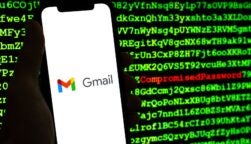You’ve probably been impacted by a data breach, even if you don’t know it. Major data breaches – like the national public data breach which comprised sensitive data of over half of the US population – have become alarmingly common, while much smaller attacks take place on home soil every day.
The truth is, that while businesses in certain industries – like healthcare and IT services – are more vulnerable to attacks than others, no sector is immune to cyber threats. So, to avoid the financial and reputational damages that can result from a breach, staying one step ahead of cyber criminals is a necessity in 2025.
The good news? You don’t need a dedicated cybersecurity team to avoid becoming a data breach statistic. We’ve rounded up seven tried-and-tested strategies you can follow to protect your business and outlined what steps to follow if you do fall victim to a breach.
Data Breaches Are On the Rise, and Their Impacts Are Damaging
If data breaches aren’t ringing your alarm bells yet – they probably should be.
A record number of data breaches took place in 2024, with up to three billion records being compromised as a result, and IT services and healthcare being the most impacted sectors, according to a report from IT Governance USA.
In August alone, the National Public Data breach exposed the sensitive information of up to 2.9 billion people, with smaller-scale attacks being levied against private companies like AT&T, Ticketmaster, and Disney.
 This just in! View
This just in! View
the top business tech deals for 2025 👨💻
How to Prevent a Data Breach In Seven Practical Steps
With these attack vectors in mind, here are seven sensible measures your business can take to lower risks in 2025, and beyond.
1. Use multi-factor-authentication (MFA)
Multi-factor authentication – often abbreviated to MFA – is an identity verification method that requires users to offer at least two different forms of evidence to enter an account.
As passwords alone continue failing to adequately protect user accounts, MFA is emerging as the new gold standard in security access. By adding an extra layer of security to the login process, the authentication measure is able to block out 99.9% of attacks making it significantly easier for businesses to keep accounts secure, and their data in the right hands.
With such a high success rate, you’d expect that adopting this measure to be a no-brainer for security-conscious business leaders. However, the results of our report found that nearly a fifth (19%) of senior leaders are unable to correctly define the term, suggesting that many businesses are still a step behind the curve when it comes to understanding the security benefits of MFA.
2. Create strong passwords
When with extra fortifications like MFA, passwords still remain a necessity for many businesses.
The truth is while passwords alone are not generally considered a safe form of defense against hackers, not all codes aren’t created evenly. Strong passwords containing a mixture of lower and upper case letters, numbers, and special characters are significantly more secure than simple codes.
In fact, research has found that while simple 7-character passwords can be cracked in just two seconds, it’ll take a hacker upwards of 226 years to crack 12-character passwords with a mixture of numbers, letters, and symbols.
Committing such codes to memory might sound like an impossible task, but password managers like LastPass and 1Password can store all of your codes for you, and even help you create strong passwords for each account.
4. Use passkeys
If you want to move away from passwords altogether, lots of services will offer passkeys as a form of fortification. Passkeys rely on biometric information like facial scans and fingerprints, swipe patterns, and PINs to verify a user’s identity – instead of awkward codes.
Due to their reliance on the WebAuthn standard for public-key cryptography, they can’t be stolen or forgotten in the same way as a password or physical keys, making them much more secure than passwords. Their adoption is catching on fast too, with Google announcing that passkeys have marked the “beginning of the end of the password” and companies like Apple and Microsoft using them as the authentication method of choice.
Learn more about the difference between the two security measures in our guide to passkey vs passwords.
4. Download antivirus software
With computer viruses being the fastest-growing attack vector in 2025, if you’re not currently protecting business systems with antivirus software you’re dancing with fire.
Malware like viruses, worms, or trojans are frequently used by cybercriminals to infiltrate systems and gain access to company data. For example, just this last year, multinational tech company Fujitsu fell victim to a data breach after malware was found on company computers, while US company Change Healthcare was forced to pay a $22 million ransom after they were targeted by Russian ransomware.
Antivirus software like Avast Business Security form a vital barrier of defense against malicious software, by letting businesses scan and protect systems from threats in real time. Lots of platforms offer bonus security features like firewalls and VPNs too, making them a security Swiss army knife too valuable to overlook in 2025.
5. Update your software
Keeping your software up-to-date is also a critical step in avoiding data breaches. Cybercriminals actively search for outdated software with known vulnerabilities. So, by keeping on top of software updates your program will be protected with security patches, making it harder for bad actors to access easy entry points.
Outdated software often has loopholes that make them more vulnerable to malware and other viruses. Therefore, by updating your software, and unlocking the platform’s latest security defenses, your system will be much less susceptible to dangerous computer viruses.
Fortunately, keeping software up-to-date is pretty straightforward. You just need to ensure automatic software updates are always switched on, and always update a software patch to do so.
6. Train employees on cybersecurity
Your company is only as strong as your weakest link. So, since a staggering 88% of data breaches are caused by human error, getting employees up-to-speed on cybersecurity is the only way you’ll be able to mitigate damages in the long term.
For best results, we recommend providing ongoing training to keep employees informed about the latest threats. Offering regular refreshers is also a useful way to remind your workforce about best practices, as it’s easy for standards to slip if security training is only offered once in a blue moon.
To make the training more engaging, we also advise running simulated attacks – like phishing campaigns or ransomware drills – to evaluate how employees respond to threats in real time and identify potential gap in knowledge. However, instead of penalizing workers who respond incorrectly, it’s best to encourage those who respond correctly, to positively reinforce the right behavior.
7. Perform vendor risk assessments
Another way to proactively strengthen your company’s cybersecurity, is by conducting a vendor risk assessment. This process refers to a company identifying and evaluating potential risks associated with a third-party vendor, like a supplier or service provider.
Vendor risk assessments typically involve sending questionnaires to vendors to gather critical information about their security practices, compliance frameworks, and data protection policies. By identifying potential risks before they occur, these assessments can drastically minimize the likelihood of vendor-provoked data breaches.
We’d advise conducting reviews before you onboard any new vendor. And aside from the initial assessment, we recommend continuously monitoring your vendor’s security posture, to ensure that risks are mitigated in the long-term.
What To Do In The Event Of a Data Breach
Following the steps above will dramatically lower your chances of becoming a data breach statistic. However, as the threat landscape continues to evolve, the harsh reality is that you could still fall victim to an attack even if you practice good cyber hygiene.
- Back up your data – The first risk mitigation step should actually take place before you get hacked. Regularly backing up your data will allow you to quickly and efficiently restore lost or compromised data if an attack takes place. It will also give you some leverage against ransomware attacks, as you won’t be tempted to pay a ransom if all your data is safely backed up.
- Contain the breach – In the unfortunate event of a breach, you’ll need to immediately identify the systems, data, and users that have been affected. You’ll also need to pinpoint the entry point and method of attack, before disconnecting the compromised systems from wider networks to contain the impact of the breach.
- Form an incident response plan – After the breach is contained, you should get working on your incident response plan. This includes assembling an efficient response team comprised of IT, HR, legal professionals, and executive leadership, before following taking the necessary steps to remedy the situation.
- Notify affected parties – Depending on the scope of the data breach, you’ll also have to alert key employees and third-party experts soon after it occurs and provide them with the necessary support. Depending on laws in your country and region, you may need to do this within a specific timeframe.
- Strengthen your defenses – Data breaches can be important learning curves. So, once you’ve carried out a thorough post-mortem, you should revise your cybersecurity policies based on the lessons you learned from the cyberattack.
Learn about some other cyber security measures you can take to protect your business from lurking threats.




